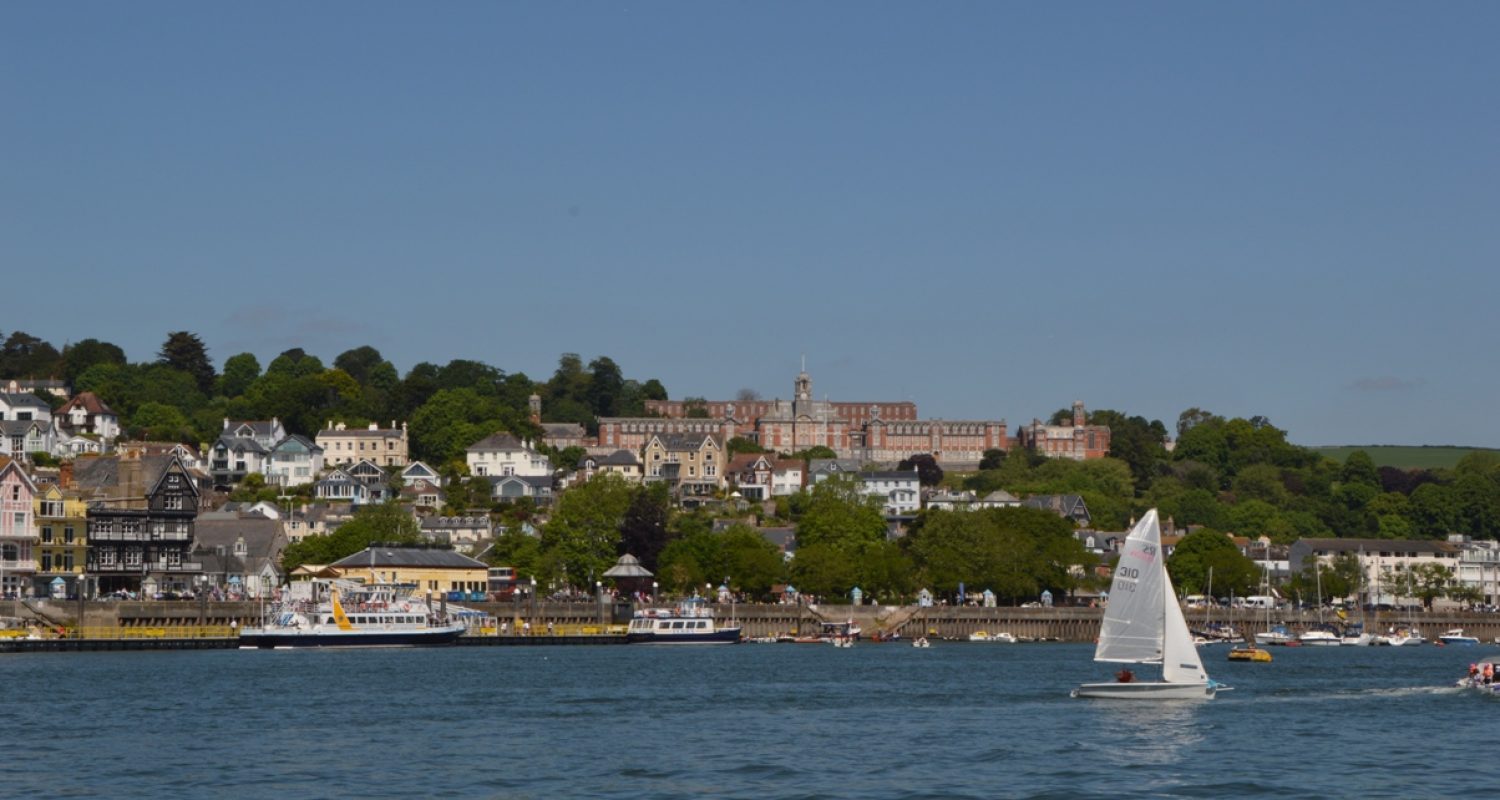
Dartmouth has a fascinating and rich history reaching as far back as the Celts and Saxons. Below is an overview of the history of the town. If you would like to find out more about the history of Dartmouth visit the Dartmouth History Research Group website www.dartmouth-history.org.uk
The river Dart, with its excellent deep water harbour, has been used by man for many thousands of years. The Celts and Saxons were the first to establish themselves in the area, building primitive settlements on the river banks and the surrounding hills, which they would have had to defend from the marauding attacks of the Vikings.
The first established settlement in the area, mentioned in the Domesday Book of 1086, was at Townstal, up the hill from the river. At a later date two fishing hamlets became established on the river banks themselves – they were known as Clifton and Hardness. They were separated by a deep tidal inlet which was subsequently bridged in the 13th century by a man-made bank known as the Foss. Foss Street still exists today, but the two mills built on the bank which were driven by the incoming and outgoing tides have long since gone.
Dartmouth has been the home of several people who have made significant contributions to history. One of these is Thomas Newcomen who in the early 1700s invented the very first working steam engine – long before the more famous James Watt came on the scene. In the 18th century several hundred Newcomen engines were in use pumping water out of mines all over the country. Today, an original Newcomen engine is on display and can be seen working at Dartmouth’s Tourist Information Centre.
Land reclamation has been a recurring feature of Dartmouth’s development over the centuries and most of the level areas of the town were previously river banks and mud flats. It was in the 16th and 17th centuries – the times of the Tudors and the Stuarts – that Dartmouth developed into a significant trading port and many buildings of that era still exist within the town today. The Butterwalk in Duke Street is one fine example.
The town continued to thrive and expand with further reclamation of land from the river, but by the 1800s space to accommodate Dartmouth’s growing population was in short supply. So in 1825 a decision to fill in the mill pool beside the Foss was taken. This provided much needed building land for houses and also a new market square. At the same time a new road up to Townstal was constructed – a huge improvement on the narrow and steep tracks that had previously been the only means of accessing the town.
Towards the end of the 19th century the old wharves and slips along the river bank were becoming increasingly unsuitable for the larger ships of the Victorian era and a completely new waterfront comprising the North and South Embankments was constructed and opened in 1885. This waterfront was extended in the 1930s up to the Higher Ferry which involved the reclamation of a large area of mudflats that became Coronation Park.
For many, the name of Dartmouth is immediately associated with the training of young naval officers. Back in the 19th century their education took place on two vessels moored in the river. But in the Edwardian era a grander plan was conceived and the world famous Britannia Royal Naval College, on a hill above the town and overlooking the river, was opened in 1905. The College continues to thrive today and represents an important element of Dartmouth life.
In more recent years the town has needed to adapt to the growth of tourism and the increasing volumes of traffic that this generates. By the 1970s the old road systems were becoming increasingly inadequate, so a completely new and modern access road was designed and built which, as it passed immediately in front of the gates of Britannia College, was appropriately named College Way.
Much more information about the history of Dartmouth is available from the websites of:
Dartmouth History Research Group:
www.dartmouth-history.org.uk
and
Dartmouth Museum:
www.dartmouthmuseum.org
Some important dates in Dartmouth’s history
- 1049 First mention of 'mouth of Dart' as a haven and landing place in the Anglo-Saxon Chronicle.
- 1147 & 1190 Second and Third Crusades – ships assembled in harbour.
- c. 1243 Foss dam built across tidal creek.
- 1286 Edward I visited the town, and permitted the building St. Saviour's Church.
- 1341 Official Borough status granted by Edward III.
- 1377 Town raided by French-led force.
- c.1388 Hawley's 'fortalice' built at the river mouth.
- 1404 Bretons prevented from sacking Dartmouth by defeat at Battle of Blackpool Sands.
- 1488-94 Dartmouth Castle built.
- 1583 Sir Humphrey Gilbert colonised Newfoundland.
- 1588 Dartmouth ships helped defeat Spanish Armada.
- 1620 Pilgrim Fathers called at Dartmouth.
- 1646 Fairfax recaptured Dartmouth for Parliament.
- 1712 Newcomen built first full-scale steam engine.
- 1775 Poorhouse built on site of St. Clare's Chapel.
- 1822 First recorded Dartmouth Regatta.
- 1823-26 New Road to Townstal built, allowing wheeled vehicles into town. Later renamed Victoria Road.
- 1831 Opening of Floating Bridge (Higher Ferry).
- 1846 Visit of Queen Victoria and family in royal yachts.
- 1863 HMS Britannia, training ship, moored of Sandquay.
- 1905 Britannia Royal Naval College completed.
- 1937 Coronation Park opened on reclaimed land.
- 1944 480 Allied ships left the Dart to join the D-Day invasion.
- 2020 400 year commemoration of the sailing of The Mayflower
Historical Places to Visit:

